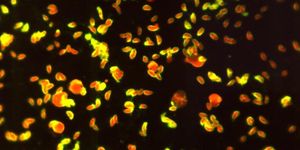A New Light: How a Particle Accelerator Helped Solve a COVID Mystery
We know that the coronavirus wreaks havoc on the lungs. About 14 percent of cases are severe, with patients’ lungs filling up with fluid, mucus, and dead cells—the aftermath of out-of-control inflammation.
But what about the other COVID patients who experience mild to moderate infections? What is the virus doing to their lungs on a cellular level?
University of College London researchers are using a revolutionary, unconventional approach to answer these lingering COVID questions: super-bright X-rays.
The technology, Hierarchical Phase-Contrast Tomography (HiP-CT), requires the use of a particle accelerator. This device propels protons and electrons at high velocities, close to the speed of light. Teaming up with physicists at the European Synchrotron Research Facility, the researchers developed a method of using HiP-CT to scan donor lung tissue from a COVID-19 patient.
What gives this platform to visualize tissue architecture like never before is its sheer brilliance—it emits X-rays 100 billion times more intense than a traditional hospital X-ray. Under this blazing brightness, researchers can zoom into blood vessels so fine that other diagnostic imaging techniques would miss them. For instance, conventional CT scans have resolutions that allow them to capture capillaries and fine vessels about 1 millimeter in diameter. HiP-CT, on the other hand, can image vessels that are 100 times smaller.
According to Claire Walsh, one of the research leads on the project, the capabilities made possible with this new technology are unprecedented in the field of medical imaging. “For understanding human anatomy this is also a very exciting technique, being able to see tiny organ structures in 3D in their correct spatial context is key to understanding how our bodies are structured and how they therefore function,” said Walsh.
The team’s examination of the COVID lung tissue revealed the root cause behind the sharp decline in blood oxygen levels during the throes of infection. The two vascular systems of the lungs—one that supplies oxygen to the lung tissues and the other that transfers oxygen from the air to the bloodstream—start to blend into each other. As a result, COVID patients experience plunging oxygen saturation levels and fast, shallow breathing patterns. At this stage, those with low blood oxygen levels are between 1.8 to 4 times more likely to die in hospital.
Bolstered by funding by the Chan Zuckerberg Initiative, the team plans to stretch the horizons of their new technology with an ambitious goal of creating a Human Organ Atlas using HiP-CT. Among the organs to be visualized in ultra-high resolution are the brain, lungs, heart, kidneys, and spleen. The data will be openly accessible online to physicians and the general public.









